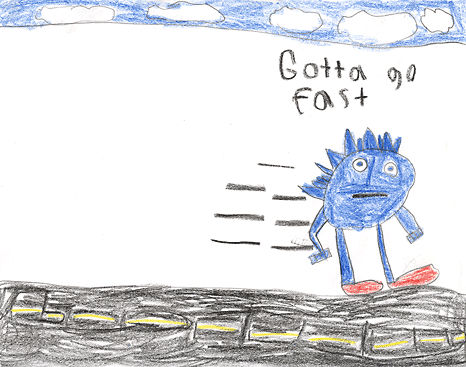Series 1: Lessons on Agile - Part 2: It ain't easy being iterative
A few thoughts on an uglier side of real-world Agile practices
Being in iterative delivery mode can feel like a grind for a PM.
In the idealised state, you’re churning through backlog items, one after the next: ship, measure, iterate, repeat. Unless you’re at an early stage of a product, 90% of these backlog items aren’t likely to be revolutionary or super sexy, but that doesn’t matter - trust the process, keep doing what you can to improve velocity, and you’re bound to succeed…right?
If you’ve made it out the Forming, Storming and Norming stages and you’ve reached this ‘Performing’ stage of team development - congrats, this is no mean feat. Interestingly though, I’ve found that this ‘high performing’ team state can introduce a number of new challenges for a PM.
This is something I’ve been thinking a lot about recently, and haven’t seen written about much elsewhere in PM literature, so I wanted to explore one of the main challenges I faced in today’s post.
Staring at the coalface
In the early stages of a team, sure there’s a load of mistakes, firefighting, and frustration, but boy do those wins feel great! Every sprint, feature release, and process change comes with a borderline euphoric feeling of relief that you even made it to the finish line, accompanied by gratitude from stakeholders. You make leaps forward towards improving your product and team performance, and this validation/vindication feedback loop keeps motivation high.
As your team matures, thanks to the wonders of Agile and continuous improvement, processes work more smoothly and each ticket theoretically becomes a bit less of a schlep. However, a few things can start to happen:
The expectations of you and your team are higher, now you’ve ‘proven yourselves’
Stakeholders got their basic needs met, so now have the liberty to focus on the details and begin to nitpick, or at its worst, become negative
You start working on those complex, annoying problems you’d left for later in the roadmap
More time is spent iterating on small details, dealing with accumulated tech debt, or maintaining existing features
The more experiments you run, the more things you’re probably getting ‘wrong’ each week!
You stop making big velocity gains each sprint, as the most important/obvious process improvements are covered
So, sure, you’re shipping more, and getting new features out is no longer such a big deal. You’re probably shipping better too, and your product is improving, but in the end you might be facing the same amount of ‘pain’ each sprint that you were before, if not more.
I found myself in a bit of a demotivating spiral. As soon as one feature released, there was little excitement, it was just ‘on to the next one’, carried by whatever momentum we still had left. I was becoming focused on the negatives and potentially unsolvable problems (“why can we never build x right first time!?”), dissociated from the progress we were actually making on the product. When something would go wrong, which it always does (see my previous post), it was totally disheartening.
I could feel burnout looming.

Fortunately, a moment of serendipity - stumbling on a screen recording of our product 6 months ago whilst clearing out my camera roll - dragged me out of this negative mindset though, and taught me a few lessons …
1. Take a step back once in a while
When you’re staring at the coalface, deep in the nitty-gritty details of building a product, it is imperative to regularly take a step back and look at how far you’ve come.
I’m not talking about running retrospectives or even formally reviewing KPIs - it can just be using Wayback machine to look at an older version of your product, or dog-fooding your latest release with a cold beer in hand, or both! What matters is making this a pleasurable activity, without a critical eye, just admiring what has been achieved and reminding yourself of all the things you and your team should be proud of. Write a few of them down too. Of course there’s more to do still, but you’ve got that under control - don’t worry about it for now, it’s on the roadmap!
This kind of self-check-in can be extremely motivating and reinvigorating.
2. Remember to celebrate success
In a similar vein, when your team is moving fast, this is the most important time to remember to celebrate success. It may feel like the wrong time, that it will cause you to lose momentum somehow or that it could cause complacency/make people feel like the job is done. In fact, I think it’s the opposite if done correctly.
In the brilliant words of Lisa Lai…
Leaders often rely on the carrot vs. the stick approach to motivate employees, where the carrot is a reward for compliance and the stick is a consequence for non-compliance. But this is an outdated approach that never really works well. Motivation is less about employees doing great work and more about employees feeling great about their work.
Regularly contextualise the importance of the work you have delivered, as well as the process improvements you may have made to help deliver that work, for you and your team. Take the time to celebrate those gains, and recognise contributors. This could happen at a ceremony like a Sprint Review or Retro, or ad-hoc, but just make sure it’s happening regularly.
Celebrating successes is huge when it comes to motivating a mature team who’ve been on the ‘grind’ for a while, and it doesn’t always mean throwing parties/giving out bonuses - as nice as these are, they are not the most sustainable, and as the PM you probably don’t hold the pursestrings to make those budget decisions!
3. Active recovery
One thing I found that really helped me was stepping away from the coalface to do some big-picture strategy work for a bit. I think of this a bit like an athlete’s ‘active recovery’ work, not too strenuous but nevertheless something most PMs wish they could spend more time doing and are grateful for doing down the line.
This may require some delegation, asking for cover, or even putting some other work on hold - you can’t just abandon the post entirely, you were there doing stuff for a reason and the show must go on - but dedicating some extra time to do some strategic thinking can be stimulating and refreshing, and definitely works a different part of the brain in a less ‘grindy’ way.
Ben
Have you faced similar 'mental’ challenges as a PM, other unexpected challenges with high-performing teams, or found great ways of celebrating success in your organisation? I’d love to hear about it in the comments below!
Next post will be final one in the ‘Lessons on agile’ mini-series: Getting lost in the sauce.


